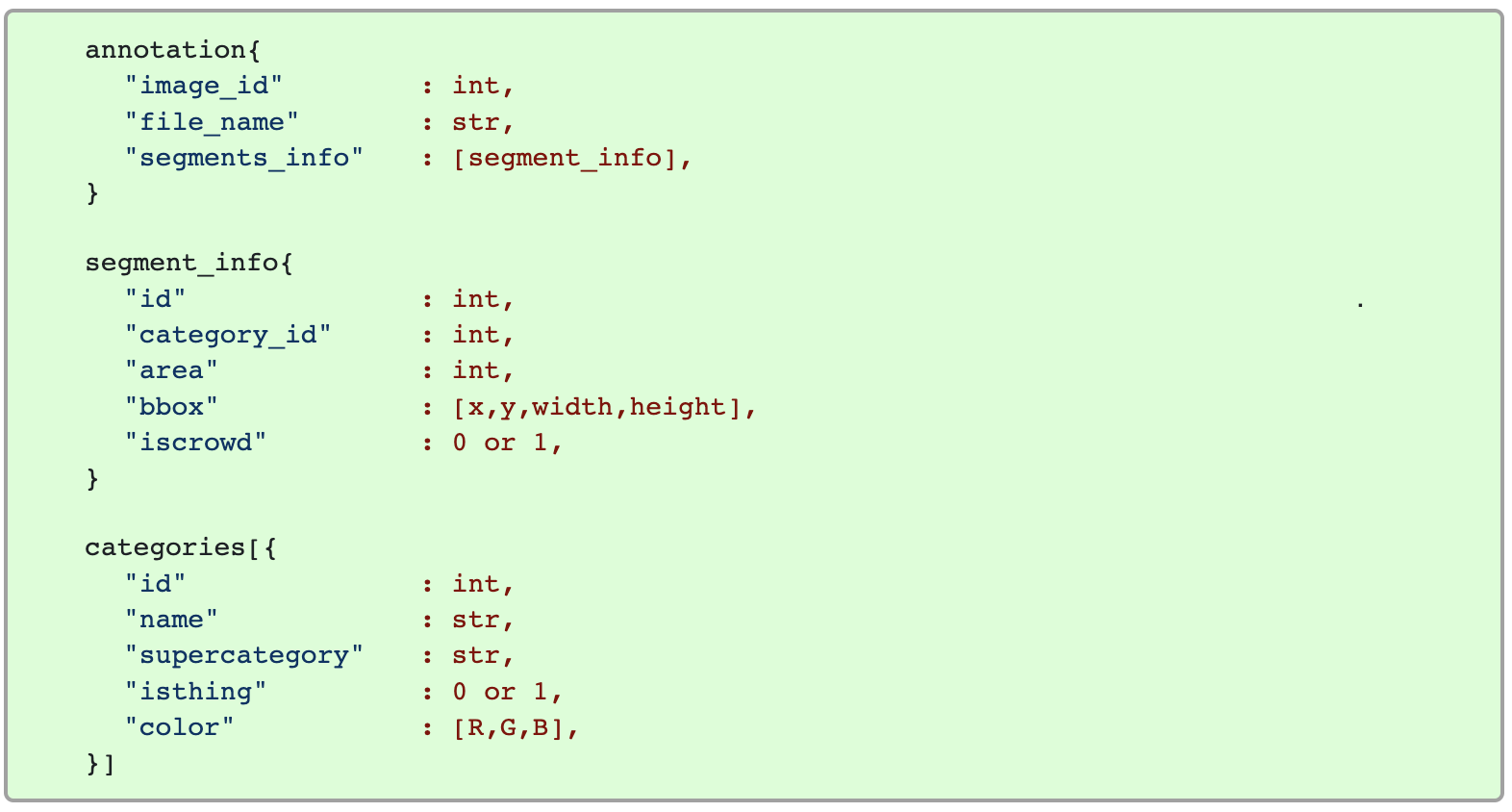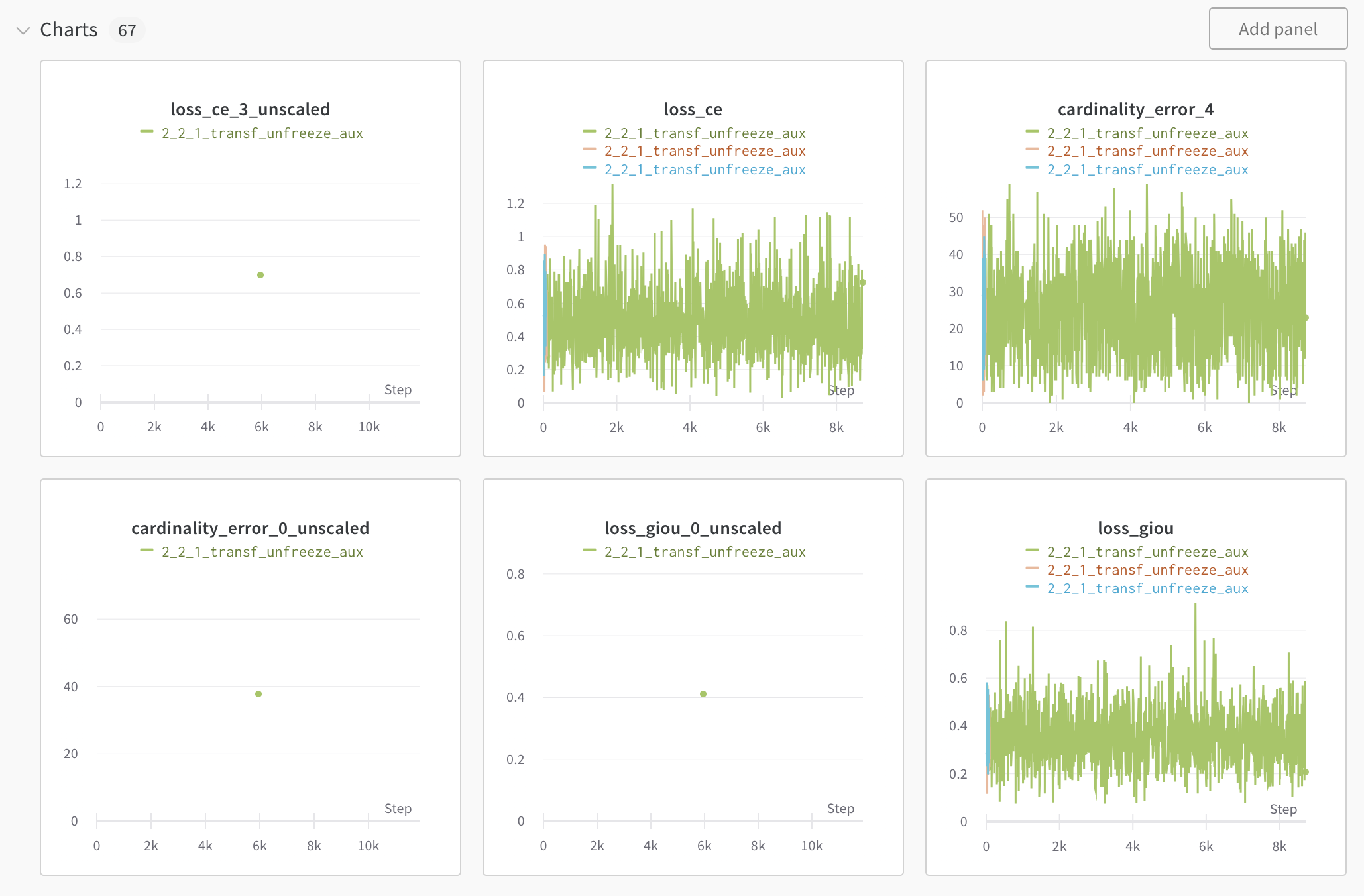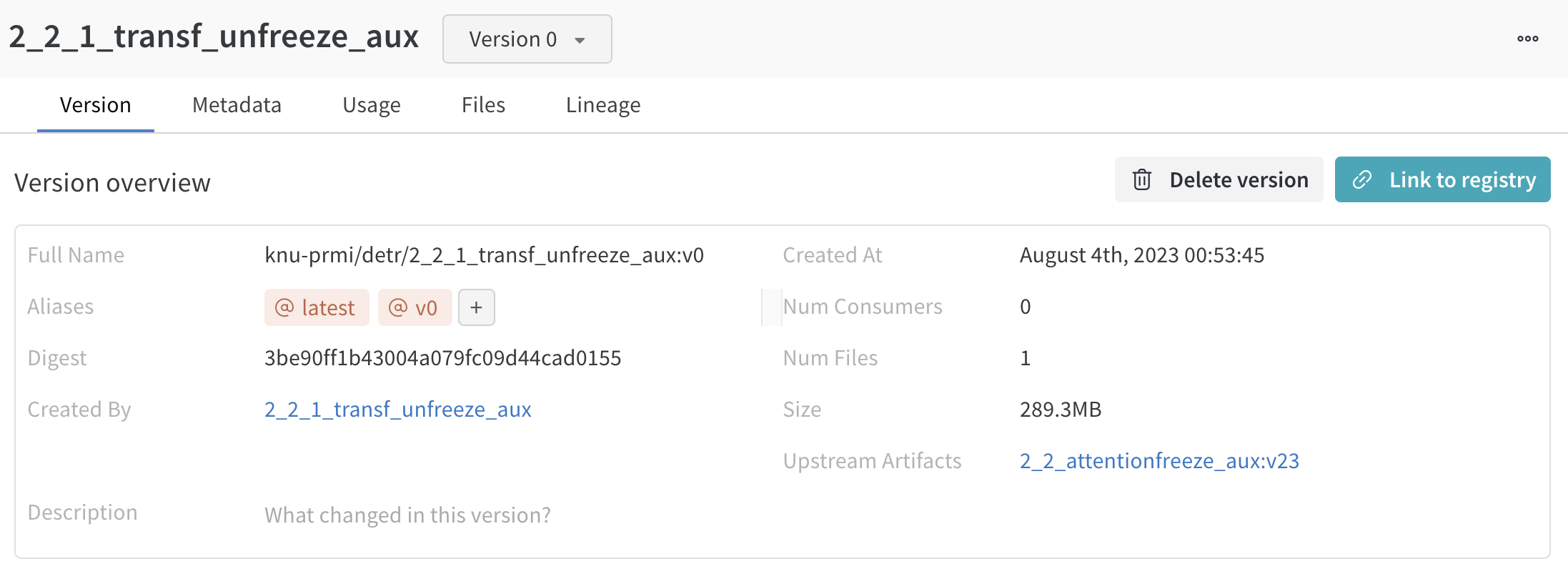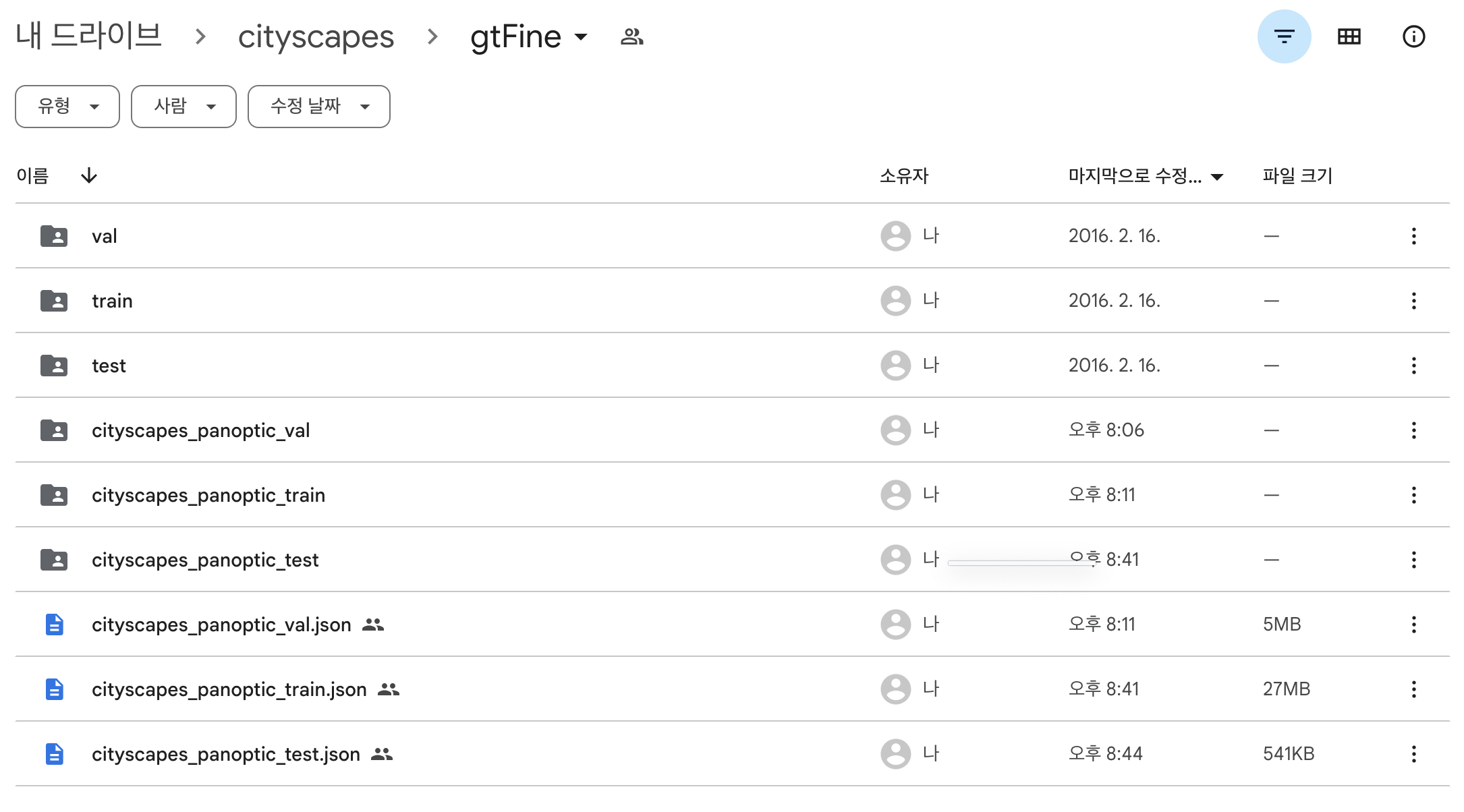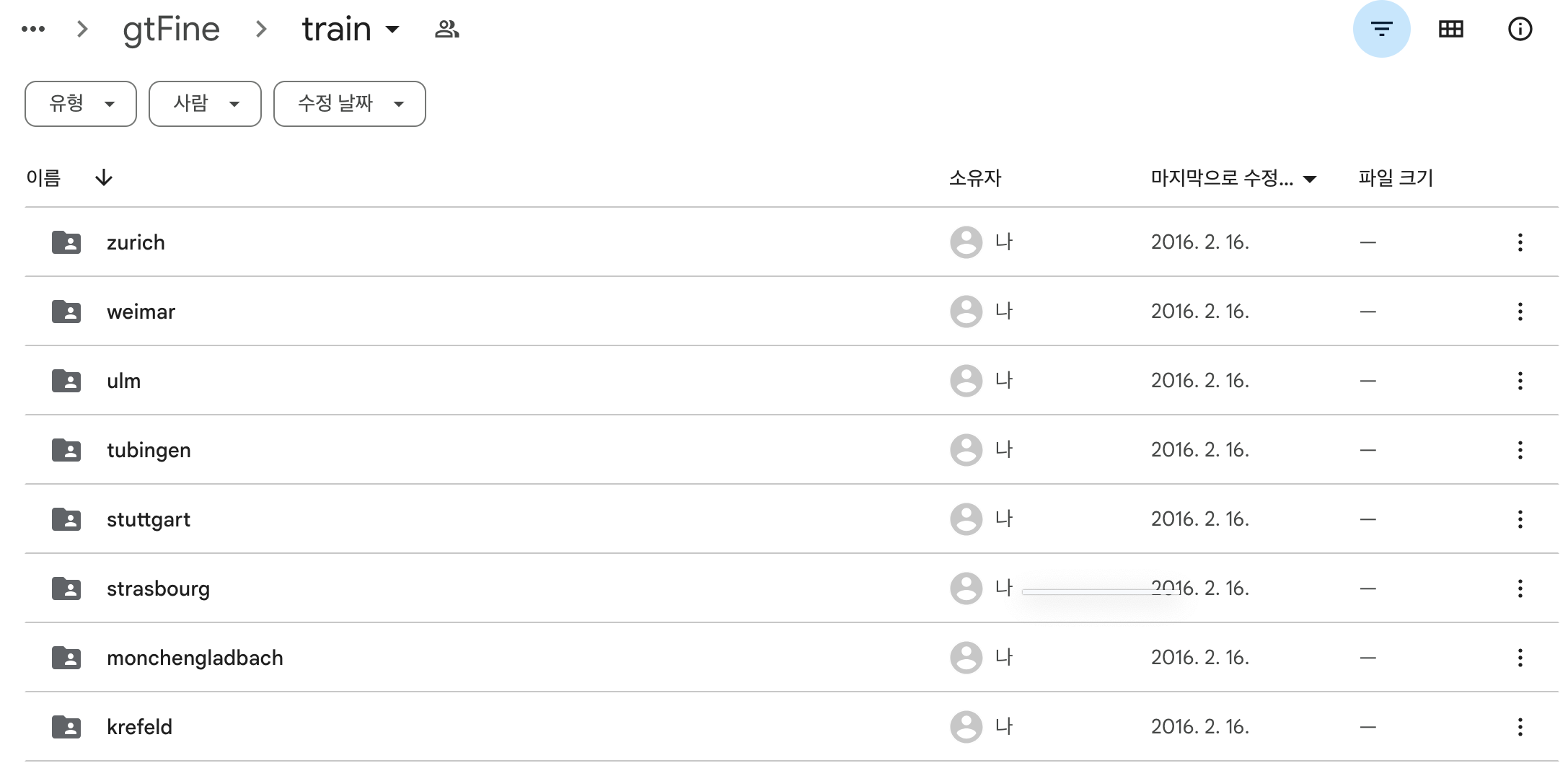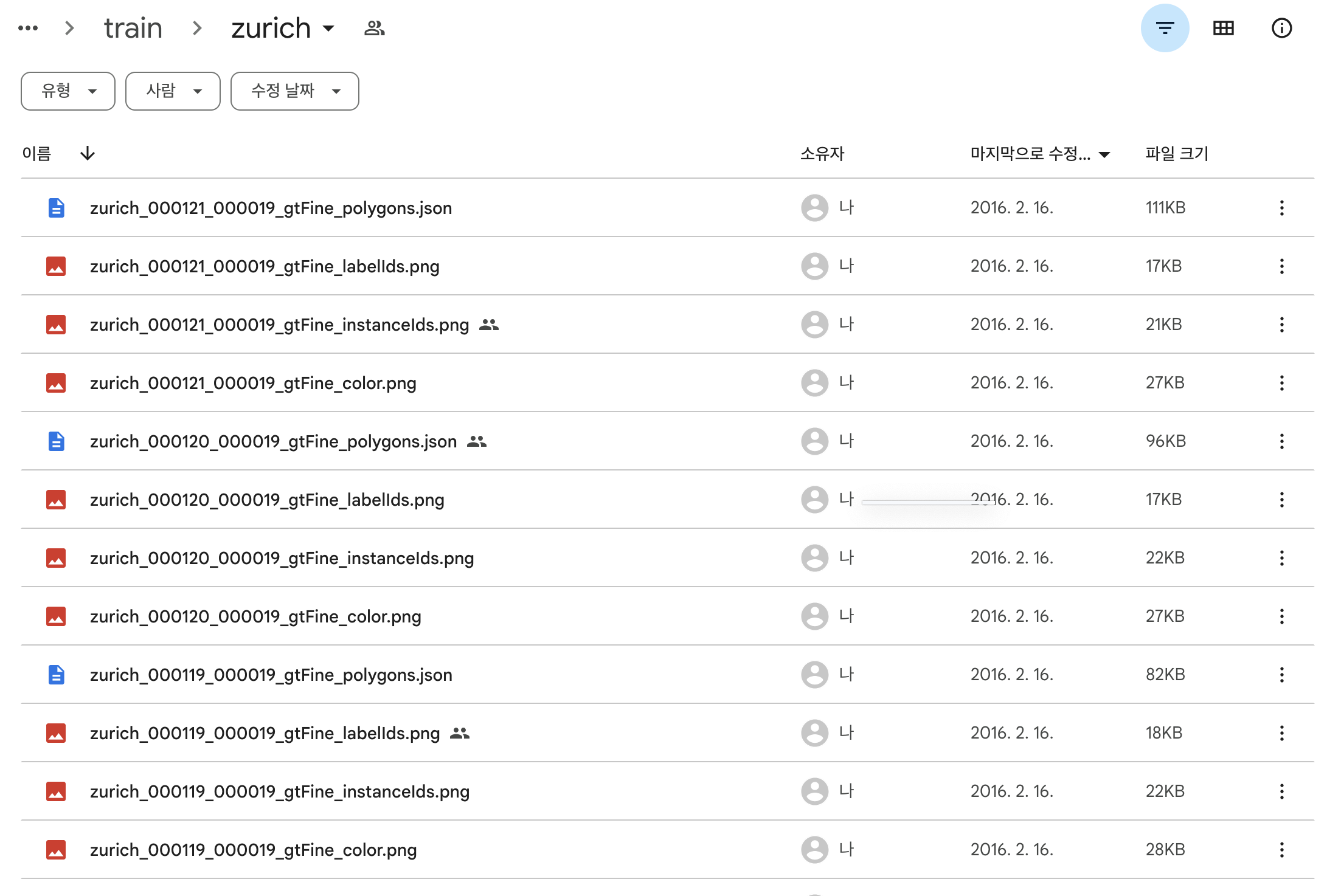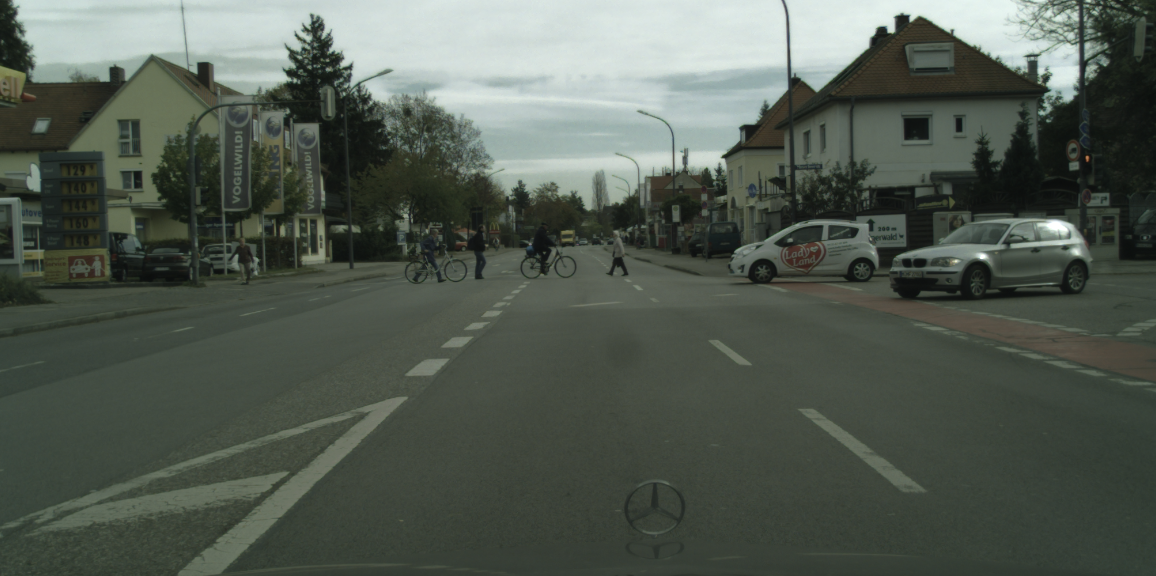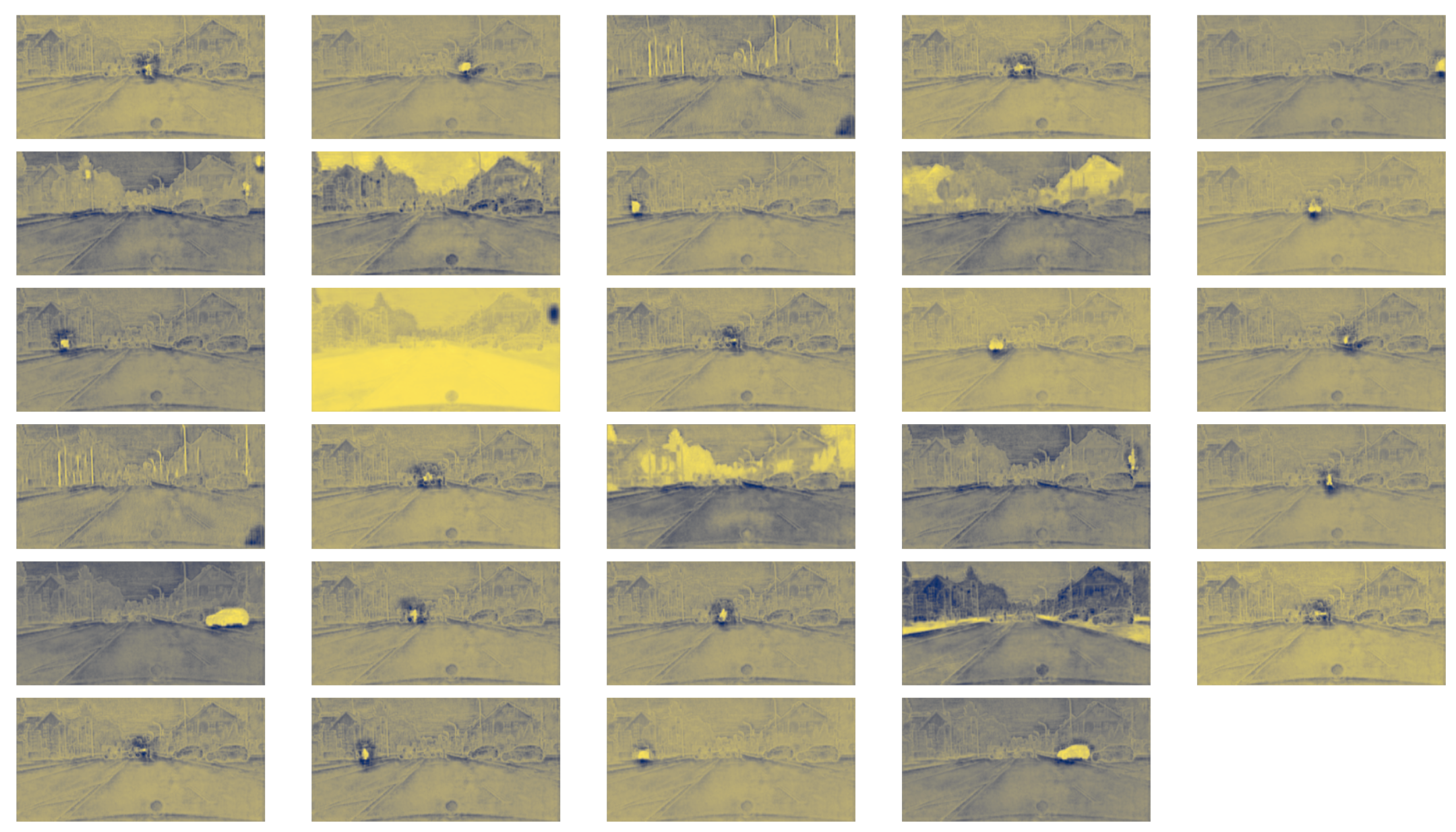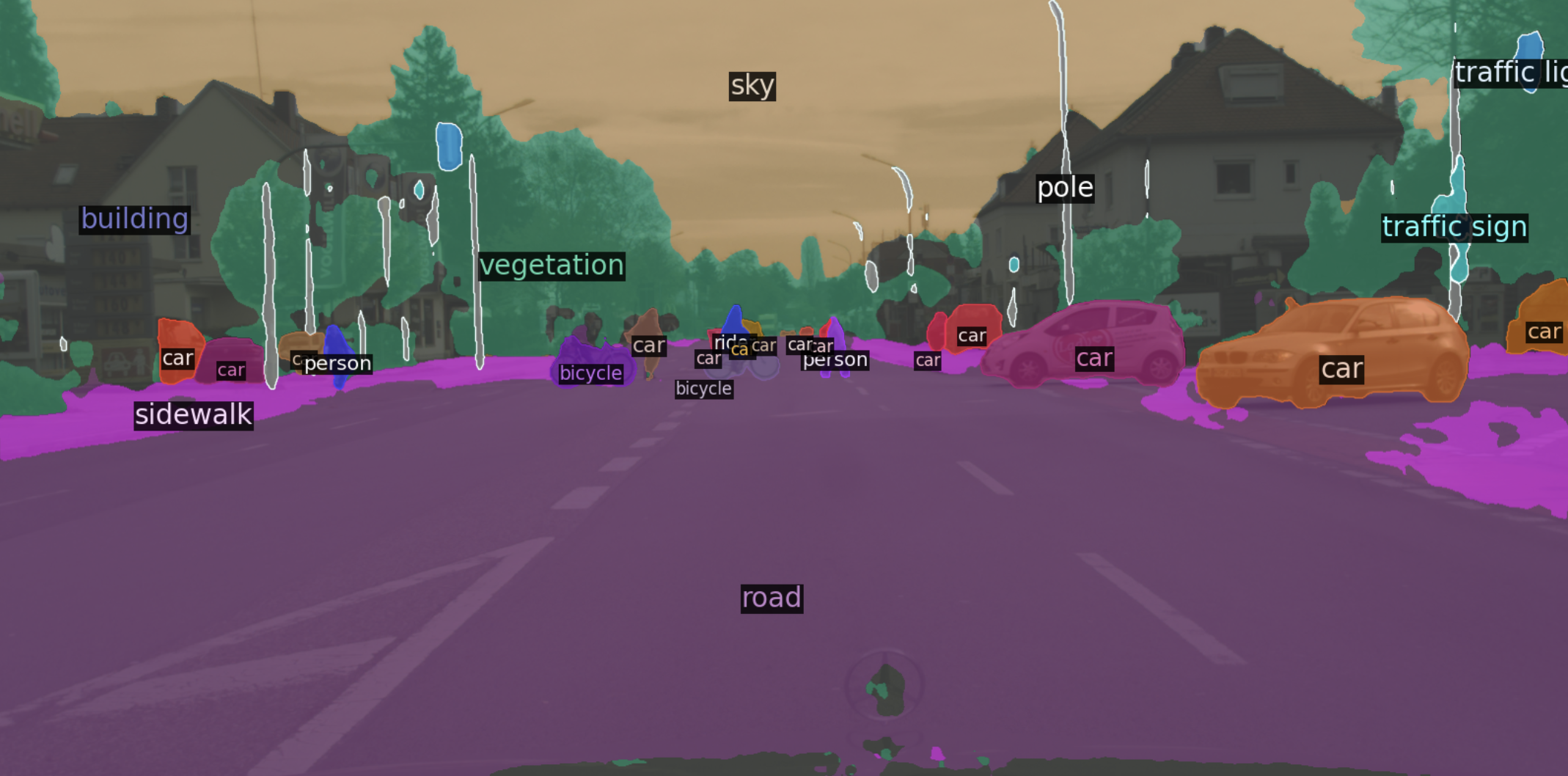2021113490 이현서
fair-DETR finetune for pretrained coco model on the cityscape dataset for panoptic segmentation
환경설정 하는데 중요한 정보 정리
DETR repo contains model, dataset, and uils
this model package provides implementation of the DETR + mask head fo panoptic segmentation
the dataset package takes care to load and parse the COCO dataset and perform data augmentation
utils package implements miscellaneous functionalities (e.g. distributed environment)
cityscapeScripts에서 clone -> Panoptic segmentation에 맞게 Parsing해야함
ityscapesScripts is used to download the Cityscape dataset and convert it to the COCO format.
THe used dataset (leftImg8but_trainvaltest with gtFine labels) consist in an archive of 5000 images where about 3000 make the train set, 500 the validation set and 1500 the test set (unused).
-
class-agnostic image segmentation(이미지 내의 객체를 구변하되, 그 객체가 어떤 클래스에 속하는지는 고려하지 않는 세분화 방법을 말함; 일종의 binary segmentation image라고 볼 수 있음)
-
JSON structstores the semantic information for each image segment.
the
unique idof the segment is used to retreive the corresponding mask from the PNG while the category_id gives the semantic category.isthingattribute distinguishes stuff and thing categories (stuff(=흔히 배경) or thing(=구체적인 객체))Cityscapes script already outpus the PNG. -> not needed list of vertex to mask image
트레이닝 스피드 높이는법
original work was trained for 3 days using cluster of 16 Tesla V100 GPUs for total of 500 epochs
Profiling the code shows up that the data augmentation process that consists in random scaling, flip and cropping consumes most of the time. Assuming that the pretrained model has properly learned a robust image representations this component can be turned off. -> data augmentation을 꺼서 모델의 robust함을 감수하는 대신 시간 효율적이게 동작시킬 수 있다.
batch size is set to 1 to act as a regularizer during the training
The starting point is the pretrained model on COCO dataset for panoptic segmentation task with ResNet50 CNN backbone.
NOTE: the convolutional backbone(=ResNet50) and is fronzen during training. A step in the x-axis correspond to 10 batches
First Step ) freeze_transformer --> fine tuning is performed keeping transformer frozen, traning only the classification, bbox and mask heads,
Second step ) freeze_attention --> only the attention layers are fronzen. attention method allow a more flexible modeling on the problem as long as many training data points are provided. and Cityscapes is a relatively small dataset
in gtFine folder there is Ground Truth Image file seperated with valtraintest and seperated with city name in Eruope
and in this folder, there is specific format file for semantic, instance, panoptic segmentation or some detection tasks. including *gtFine_polygons.json, gtFine_labelIds.png, *_gtFine_instanceIds.png, *_gtFine_color.png.
with that file I Parse for COCO2017 data format. in gtFine/cityscapes_panoptic_val, gtFine/cityscapes_panoptic_train, gtFine/cityscapes_panoptic_test, gtFine/cityscapes_panoptic_val.json, gtFine/cityscapes_panoptic_train.json, gtFine/cityscapes_panoptic_test.json. you can be searched in my google drive link.
you can find DETR_.ipynb in /panoptic-segmentation/Cityscapes/DETR_.ipynb
i logged acc, loss for wandb, plot with matplotlib, and panoptic segmentation with detectron2 wrapper
i loaded model here with artifact in my knu-primi/detr/2_2_1_transf_unfreeze_aux:v0
#@title Load model { form-width: "25%" }
# tine tuning한 artifact를 통해서 test해보자
used_artifact = "knu-prmi/detr/2_2_1_transf_unfreeze_aux:v0"
artifact = wandb.use_artifact(used_artifact)
artifact_dir = artifact.download()
checkpoint = torch.load(artifact_dir+"/checkpoint.pth")
model, criterion, postprocessors = build_model(args)
model.load_state_dict(checkpoint['model'])
model.eval();
transform = T.Compose([
T.Resize(800),
T.ToTensor(),
T.Normalize([0.485, 0.456, 0.406], [0.229, 0.224, 0.225])
])and Inference here
#@title Inference { form-width: "25%" }
im = Image.open("/content/drive/MyDrive/cityscapes/leftImg8bit/test/munich/munich_000001_000019_leftImg8bit.png")
img = transform(im).unsqueeze(0)
out = model(img)
result = postprocessors['panoptic'](out, torch.as_tensor(img.shape[-2:]).unsqueeze(0))[0]
and /content/drive/MyDrive/cityscapes/leftImg8bit/test/munich/munich_000001_000019_leftImg8bit.png test source image is here
and attention plot is here with decoder-encoder multi-head attention
and visualize panoptic-segmentation with detectron2
you can enjoy with any picture in Cityscapes!
